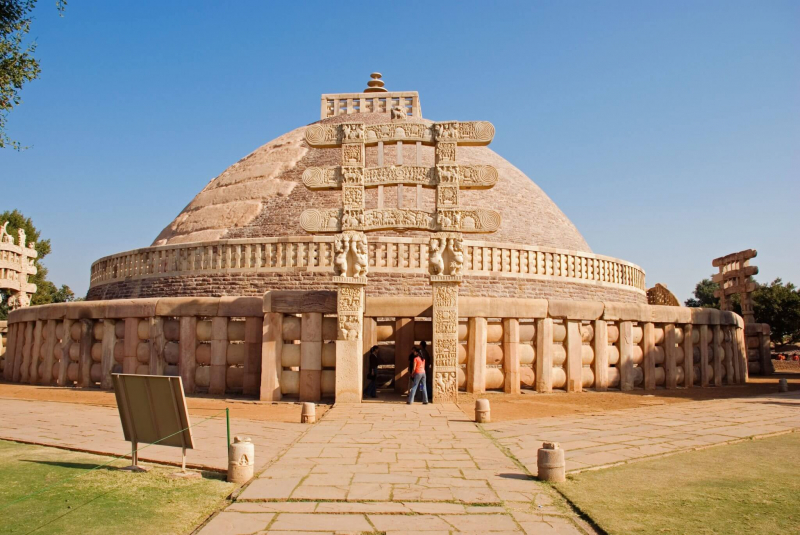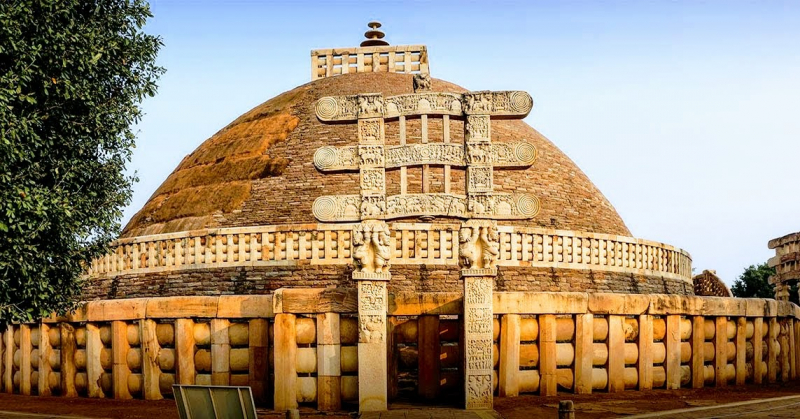Great Sanchi Stupa
Since Emperor Ashoka constructed the Great Stupa at Sanchi in the third century BC, it has served as the epicenter of the Buddhist religion in the area. The impressive building, which is still a source of awe today, is surrounded by the ruins of smaller stupas, monasteries, and temples that were constructed as the local religious community expanded over the centuries following the site's founding. It is situated at the summit of a hill.
Despite its remarkable size now, the original Ashokan stupa was made using big bricks and mud mortar, and it was only about half as big. It is thought to have had elevated terraces at the base, a wooden railing to encircle it, and a stone umbrella to top it all off. Approximately 50 years after Ashoka's passing, during the Sunga dynasty, the stupa was expanded using local sandstone. Later, in the first century BC, were added the intricately carved doorways.
The stupa's main body represents the cosmic mountain. The triple umbrella, or "chhatraveli", which stands for the three jewels of Buddhism—the Buddha, the Dharma, and the Sangha—is held by a "harmika" on top of the structure. Worshippers can stroll around the stupa on the high, circular platform at the base, which is reached by steps. Another procession path with stone balustrades is located on the ground level. The structure's features are the four cardinal point entrances, which include intricate carvings of Buddhist symbols and significant historical and religious motifs. It's interesting to note that Buddha is always shown in these sculptures as a symbol rather than a person. He appears as a horse without a rider, an umbrella over an empty throne, the Bodhi tree, or footsteps on the doorways.
Location: Sanchi, Madhya Pradesh

















